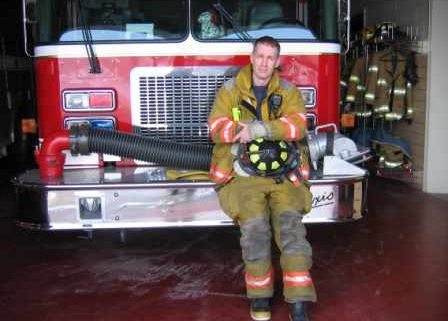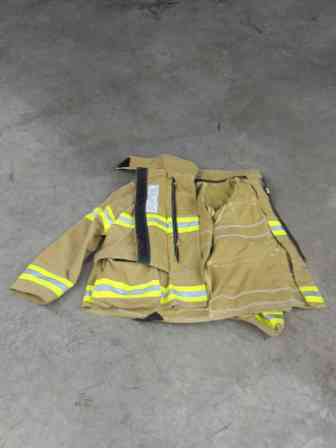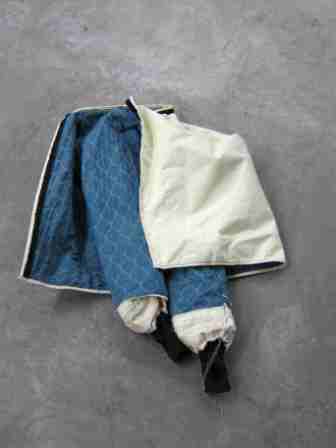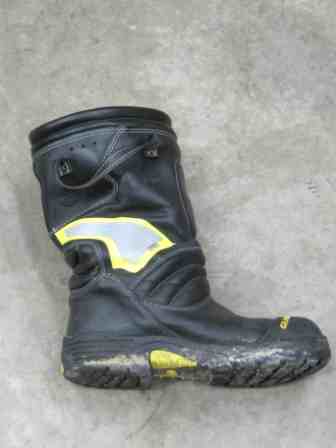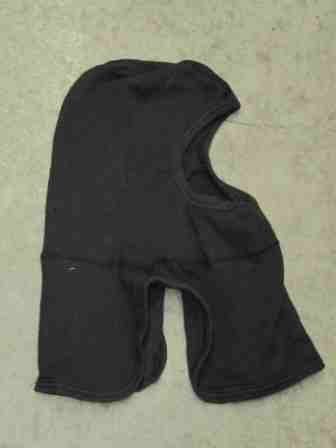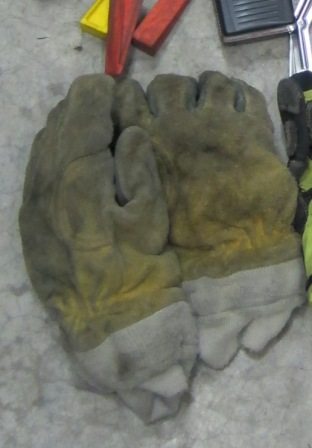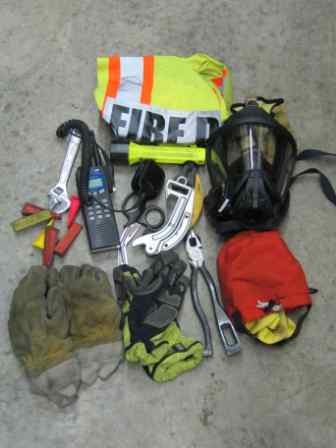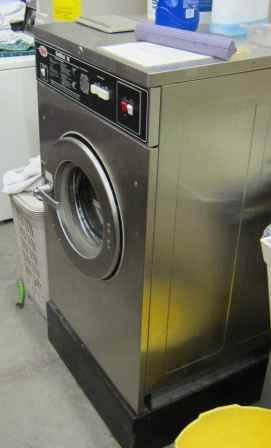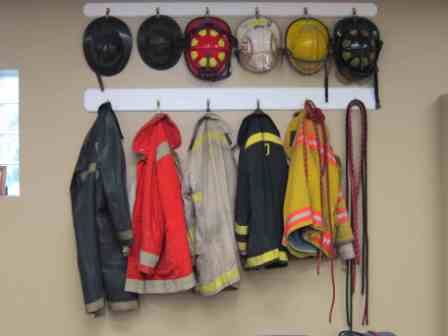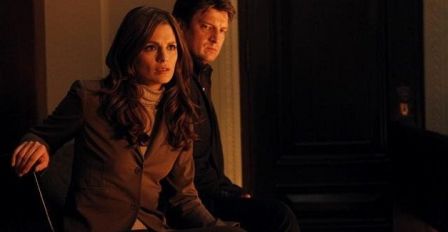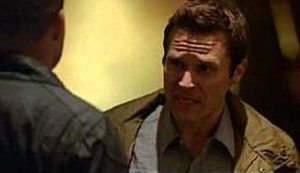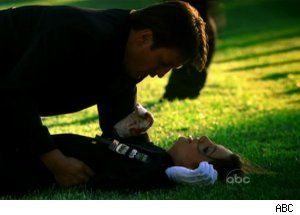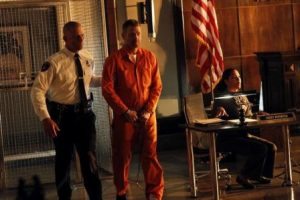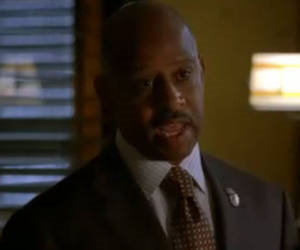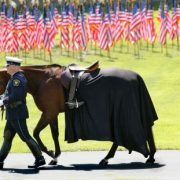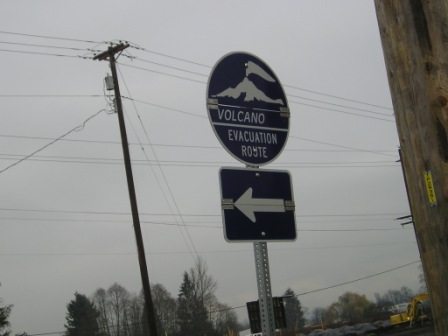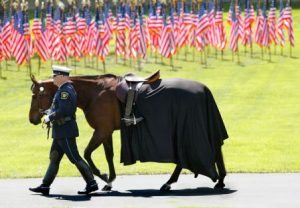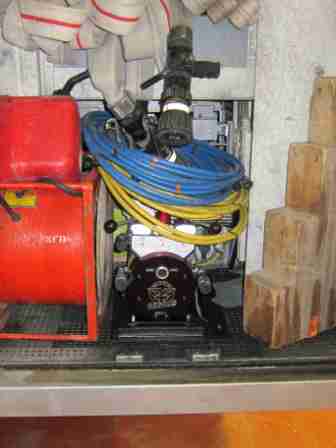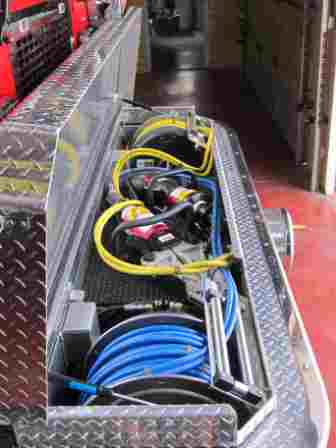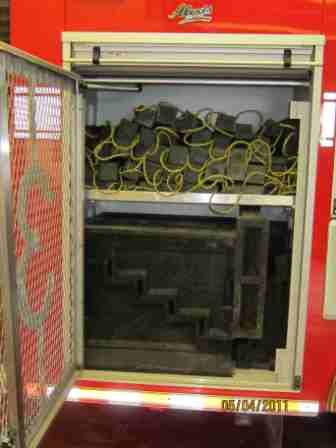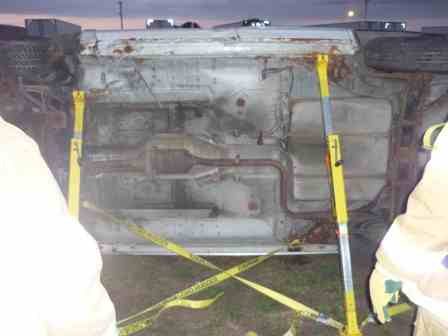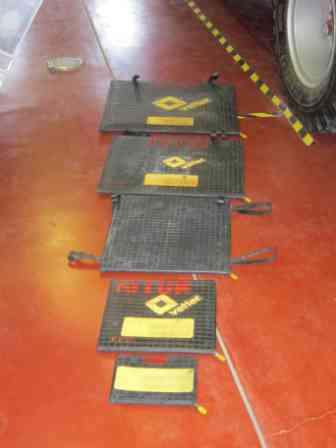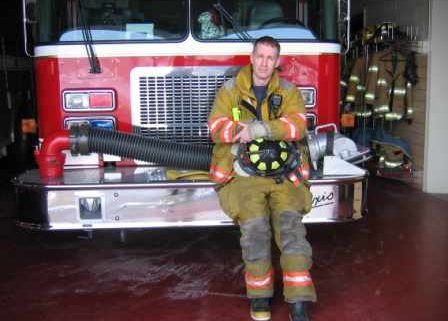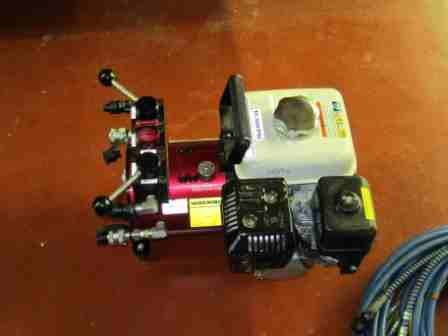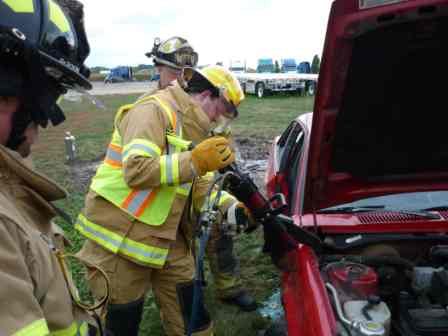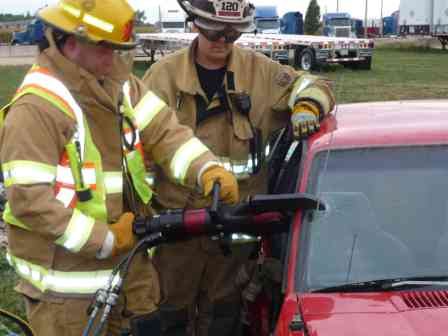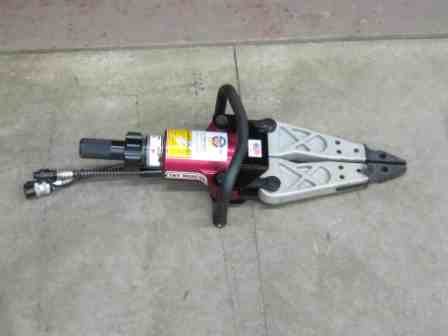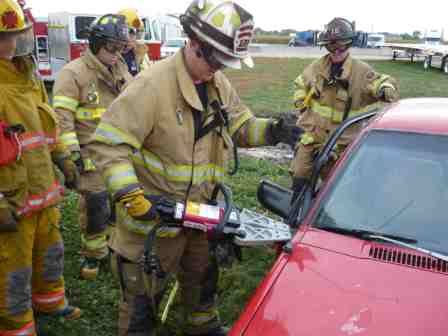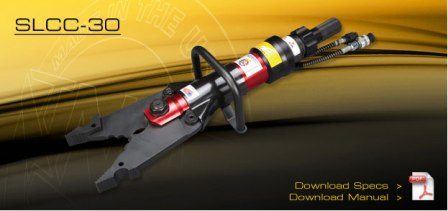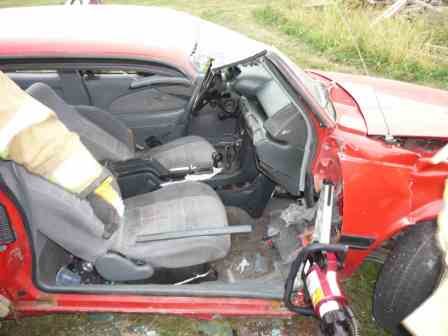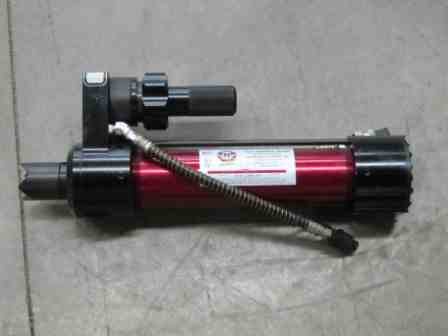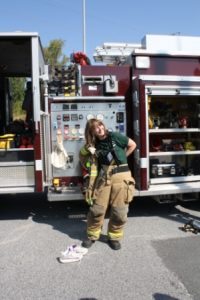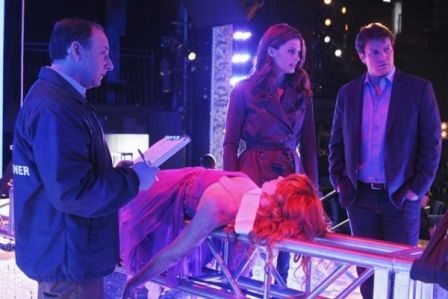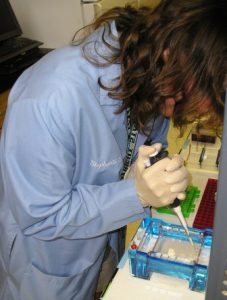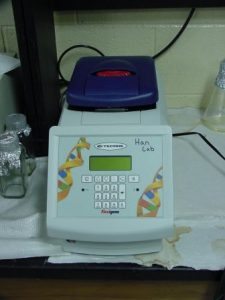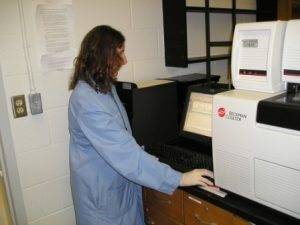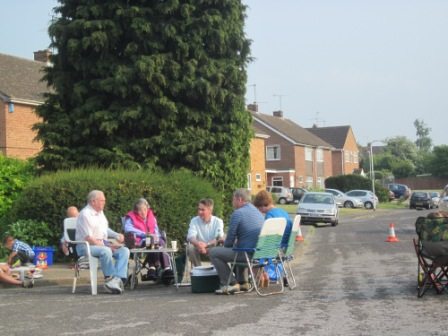I’m a twelve-year veteran firefighter/paramedic in the busiest volunteer fire department in our county. I hold numerous fire and EMS certifications—many of the same as professional firefighters. My day job is as a Critical Care Paramedic in the highest call volume EMS service in Iowa.
Bunker Gear
Crawling into a burning building isn’t for everyone. But with the protection offered by modern bunker gear, also known as turnout gear or structural firefighting gear it just a bit safer. The picture above shows me in some of my old gear.
Modern bunker gear is constructed of space age materials—some of the same used in space suits. It must meet the requirement of not melting, igniting, dripping or separating when exposed to a heat of 500°F for five-minutes. Considering that in structure fires ceiling temperatures as much as 1000 F have been recorded, it doesn’t provide as much protection as you would think. Those temperatures are also why we do most of our work crawling along the floor.
The outer shell is constructed of various combinations of Kevlar and Nomex. Constructed of rip stop weave, it is treated with a water repellent finish. It also has a great deal of reflective material—the yellow and gray strips you see in the picture. Standard colors are black, khaki, rust, yellow.
outside coat
The inner shell has two components, a moisture barrier and a thermal barrier. The moisture barrier could be made of several different materials including Nomex/Kevlar, and Aramid or similar materials. In the picture, the white layer is the moisture barrier.
inside coat
The quilted layer is the thermal layer and is also made of several different materials much like the moisture barrier in various combinations as specified by government standards.
Between the inner shell and the outer shell, which are snapped or zipped together are air pockets, “dead zones,” to help to further insulate the wearer from the extreme environments of fires.
Bunker boots are made out of leather or rubber and are slipped inside the bunker pants to provide more protection. There is a steel plate along the bottom of the boot as well as a steel toe. While it does look like these boots are insulated, when standing around in the winter, they can get very cold—I always kept a thick pair of cotton socks with my gear to keep from getting frozen feet.
old boot
Our new boots provide a great deal more comfort and insulation with the same or more protection.
new boot
The helmet is designed to protect firefighters from falling debris and it also protects against electrical, heat, and steam burns. The traditional helmet is constructed of leather, but they are also constructed of other materials including carbon fiber and plastic combinations for a lightweight design for comfort. A Kevlar lining adds strength and protection. You can see my helmet has a visor, and extrication goggles. Some firefighters put a band around their helmet which can hold a flashlight, door props, etc or otherwise personalize it.
helmet
Although the helmet does provide some protection for the ears, neck and part of the face, most firefighters wear a smoke hood constructed of Nomex and other materials to provide protection for ears, neck and parts of the face not covered by a SCBA mask. Smoke hoods are also handy for keeping your ears warm while working a winter car wreck.
smoke hood
Firefighting gloves are designed to protect from extreme heat, sharp objects while still allowing some dexterity. They aren’t waterproof and can get cold during a winter structure fire.
bunker gloves
Below is some of the stuff I carry in my pockets, including a traffic vest, radio, various wrenches, shears, door stops and strapping that can be used to bail out of a building or secure various things, and firefighting and extrication gloves. What you bring with you is entirely is an individual choice and is sometimes dictated by the area where you work—I don’t carry elevator tools because we don’t have very many in this area. You can also see my SCBA mask which when not being used, I carry in a bag on a loop on my gear.
carry stuff
There are other types of firefighting gear including woodland, Haz-Mat, proximity gear which has is turnout gear with an outer layer of heat-reflecting metallic materials and is used in extreme firefighting environments such as aircraft fires.
Considering the things that firefighters are exposed to, many of them cancer causing, you need a special washing machine to clean the gear.
washing machine
Bunker gear has a life expectancy and should be replaced at least every five-years. Considering that it costs upwards of $1,700 for just basic bunker gear, smoke hood, helmet, gloves and bunker boots, outfitting a firefighter is very expensive and you can imagine how much it would cost for a large department.
old gear
No matter, modern bunker gear has made great strides since the times of plastic helmets, rubber jackets and thigh high boots.
* * *
Want to learn more about firefighters and the equipment used by them? We have an on-site, working fire station on the Writers’ Police Academy grounds, and we’re offering workshops on arson and much more! Did I mention the firefighters and EMS workers who’ll be on hand to answer your questions? Real action demos throughout the event.
Have you registered?
http://www.writerspoliceacademy.com/
Big announcement coming soon!!

